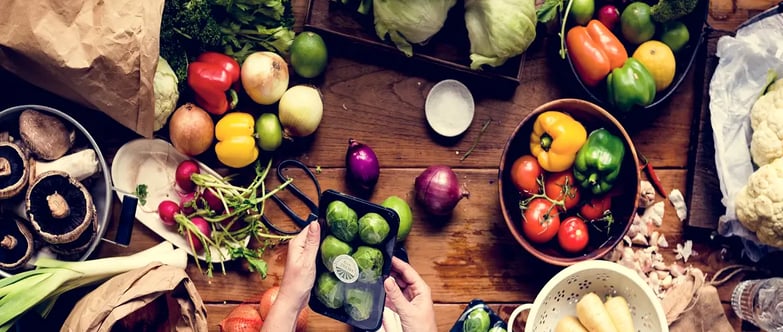
Seasonal Meal Planning With Fresh Foods On an Affordable Budget
Learn how to save money and eat healthy by planning meals with fresh, seasonal ingredients. Get budget-friendly tips and easy recipes to make the most of what's in season.
MEAL PREP PLANNING
Mae Ellison
2/22/20255 min read


Seasonal Meal Planning with Fresh Food and a Smart Budget
In today’s fast-paced world, eating healthy can often feel like a challenge—especially when balancing busy schedules with the need to stick to a budget. However, there’s a simple solution that’s not only budget-friendly but also great for your health: seasonal meal planning. By focusing on fresh, in-season produce, you can create delicious, nutrient-packed meals without breaking the bank.
Seasonal ingredients are often more affordable and flavorful, making them the perfect foundation for a meal plan that supports both your wallet and your well-being. With a bit of planning, you can take advantage of grocery store sales, farmers' markets, and homegrown produce to craft meals that are both satisfying and cost-effective. Whether you’re looking to reduce food waste, try new recipes, or save time and money on grocery shopping, seasonal meal planning can be a game-changer.
In this post, we’ll explore how to plan meals around fresh, seasonal foods, how to stick to a budget while still eating healthily, and share simple tips and recipes to get you started. So, let’s dive into how you can enjoy flavorful, fresh meals without the stress on your finances!
Why Seasonal Meal Planning Saves You Money and Time
Lower Grocery Costs with In-Season Produce
When you buy produce that’s in-season, it’s often much cheaper than out-of-season alternatives. This is because seasonal fruits and vegetables are grown in abundance, so they’re readily available in your local grocery stores and markets. Buying them during their peak season not only gives you access to better pricing but also ensures you're enjoying them at their freshest and most flavorful.
For example, buying summer tomatoes, berries, or cucumbers is far less expensive when they’re in season compared to when they’re grown out of season in greenhouses or shipped from far away. Over time, you can save a significant amount on your grocery bill by choosing what's in season.
Less Food Waste
Planning meals around what’s fresh helps reduce waste by making sure you’re using produce before it spoils. Seasonal ingredients are often easier to store and preserve, so you can keep them for longer or freeze extras to use later.
A good trick is to buy in bulk when prices are low, then freeze or preserve your extra fruits and vegetables. For example, summer peaches can be frozen for smoothies, or autumn squash can be roasted and stored for future soups and stews. This strategy will reduce waste and give you the satisfaction of enjoying those fresh flavors all year round.
Simplified Shopping and Meal Prep
Meal planning around what’s in-season also simplifies your shopping experience. You’ll create a grocery list based on what’s available that week, and the seasonal produce will often be displayed together, saving you time in the store. Plus, there’s less temptation to purchase expensive, out-of-season items that you don’t need.
By sticking to fresh, seasonal ingredients, you’ll be able to quickly plan meals, prep in advance, and enjoy wholesome dishes without feeling overwhelmed by the complexities of planning for a variety of foods.
How to Plan Your Meals Around Seasonal Ingredients
Understanding the Best Seasonal Produce
One of the first steps in seasonal meal planning is knowing what’s in-season. The types of fruits and vegetables available will vary depending on the time of year and your location. Here’s a breakdown of common seasonal produce for each season:
Spring: Asparagus, peas, strawberries, spinach
Summer: Tomatoes, cucumbers, zucchini, berries, peaches
Fall: Squash, sweet potatoes, apples, kale, carrots
Winter: Root vegetables (carrots, beets, turnips), citrus fruits, cabbage
Understanding which ingredients are available in your area will help you make better choices when creating your meal plan.
Create Your Meal Plan Based on What’s Available
Now that you know what’s in season, it’s time to create your weekly meal plan! Focus your meals around the freshest produce of the week. For instance, if fall squash is abundant, plan for a roasted squash soup or squash curry. If you’re shopping in the summer, a tomato-based pasta or a cucumber salad might be ideal.
When making your meal plan, try to use a variety of fruits and vegetables from the season to create balanced, nutrient-packed dishes. Here’s a quick idea for a simple weekly meal plan using seasonal ingredients:
Monday: Roasted root vegetable medley (fall vegetables)
Tuesday: Stir-fried zucchini with quinoa (summer)
Wednesday: Sweet potato and kale casserole (fall)
Thursday: Tomato and basil salad (summer)
Friday: Winter squash soup (winter)
This variety of meals keeps things exciting while utilizing fresh ingredients.
Batch Cooking and Freezing for Later
If you want to save time throughout the week, consider batch cooking some of your meals using seasonal ingredients. For instance, a hearty fall soup made with squash, carrots, and onions can be cooked in large batches and frozen in individual portions. This is not only convenient but also helps stretch your budget by making the most out of each seasonal purchase.
You can also prepare seasonal fruit like summer peaches or berries in advance by freezing them for smoothies or desserts later in the year.
Budget-Friendly Meal Planning Tips for Fresh, Seasonal Food
Shop Smart: Use Sales, Farmers Markets, and Bulk Purchases
To really maximize your savings, look out for seasonal produce sales at your local grocery store or shop at farmers' markets where you can often get the best prices on fresh, local produce. Buying in bulk (especially for items like root vegetables or leafy greens) will also help lower costs.
Plan for Leftovers
Another way to stretch your grocery budget is to plan for leftovers. By making extra portions, you can reuse meals for lunch or dinner the next day. You can even repurpose leftovers into entirely new dishes. For example, leftover roasted vegetables can be turned into a hearty vegetable soup or a grain bowl for lunch.
Stick to a Grocery Budget
Creating a grocery budget is crucial when meal planning on a budget. Once you know what’s in season, plan your meals accordingly and create a shopping list to avoid impulse purchases. Stick to your budget by being disciplined about what you buy and focusing on the seasonal ingredients that provide the most value for your money.
Easy, Budget-Friendly Recipes Using Seasonal Ingredients
One-Pan Meals with Fresh Produce
One-pan meals are a great way to use seasonal ingredients without a lot of prep time. Try a sheet pan dinner featuring roasted summer zucchini, cherry tomatoes, and bell peppers. Add your choice of protein like chicken or tofu, and season with olive oil, garlic, and herbs for a simple and satisfying meal.
Quick and Healthy Salads with Seasonal Veggies
Another easy way to enjoy seasonal food is with a fresh salad. For instance, in fall, try a salad made with roasted butternut squash, arugula, and pumpkin seeds, dressed with a simple balsamic vinaigrette. In summer, a cucumber and tomato salad with feta and a lemon vinaigrette is light and refreshing.
Slow Cooker or One-Pot Meals for Busy Weeks
For those hectic days, slow cooker meals are your best friend. Combine winter squash, carrots, and onions in your slow cooker with some vegetable broth for an easy, warming soup. You can also make a chicken and vegetable stew in a single pot, using fresh seasonal produce and saving time on cleanup.
How to Avoid Common Pitfalls in Seasonal Meal Planning
Not Being Flexible with Your Plan
While it’s great to plan ahead, don’t be afraid to adjust your meals if a particular ingredient is unavailable. Flexibility in your meal planning allows you to substitute ingredients easily and adapt to changing availability.
Overbuying and Wasting Fresh Produce
It’s easy to overestimate how much produce you’ll need. To avoid waste, plan meals that use the same ingredients in different ways, or freeze extra portions to enjoy later. If you buy too many berries in the summer, for example, consider freezing them for use in smoothies.
Ignoring the Importance of Balance
While focusing on fresh, seasonal ingredients, don’t forget to incorporate a balanced range of nutrients in each meal. Make sure your meals contain a good mix of vegetables, lean proteins, healthy fats, and whole grains to create satisfying, well-rounded dishes.
Conclusion
Seasonal meal planning is a simple yet powerful strategy to save money, eat healthy, and enjoy fresh flavors throughout the year. By focusing on in-season produce, you can make your meals both budget-friendly and nutrient-packed. With a little creativity and planning, you’ll find that eating well on a budget doesn’t have to be complicated. So, start planning your seasonal meals today, and enjoy the savings and health benefits that come with it!
